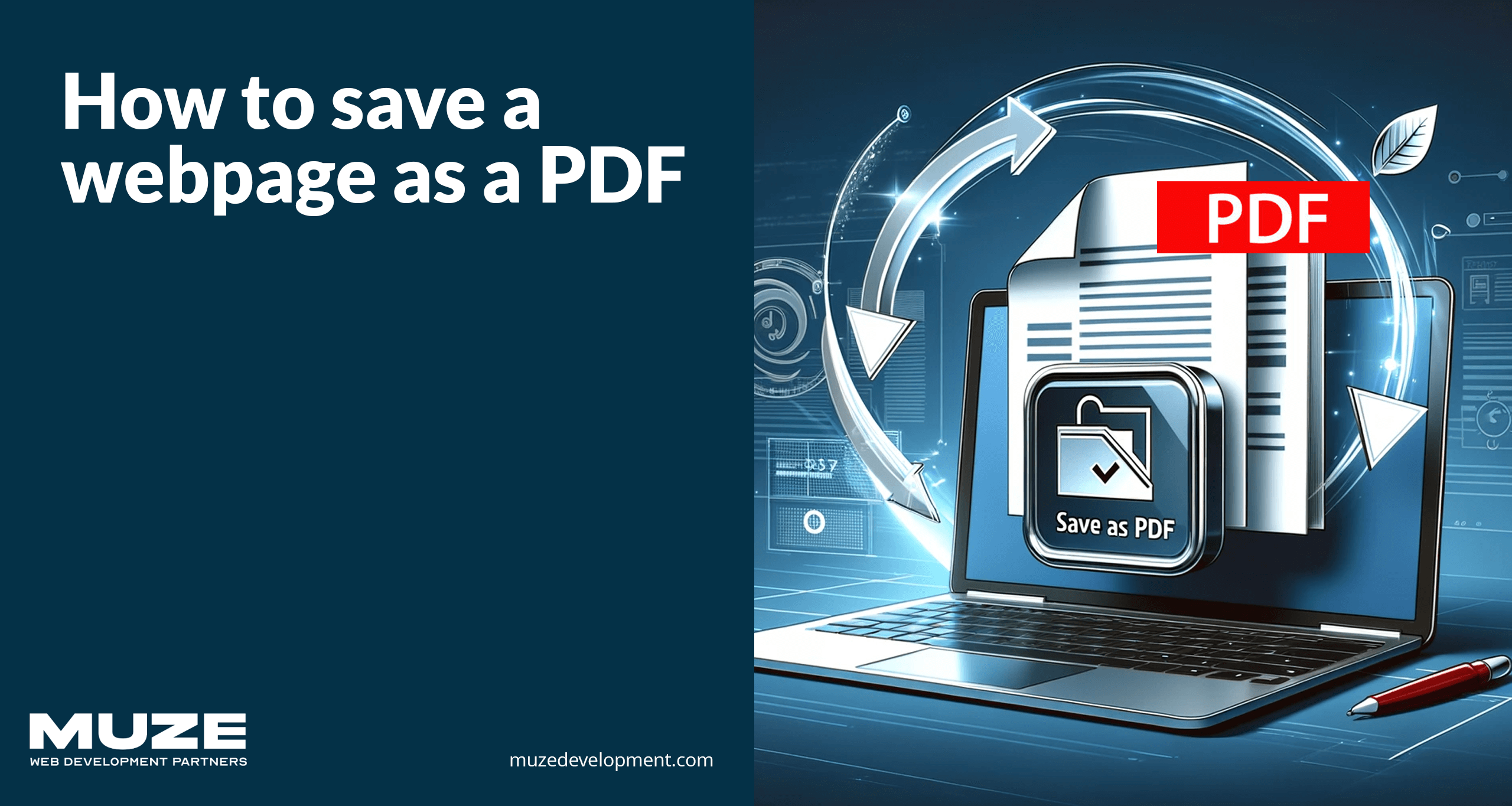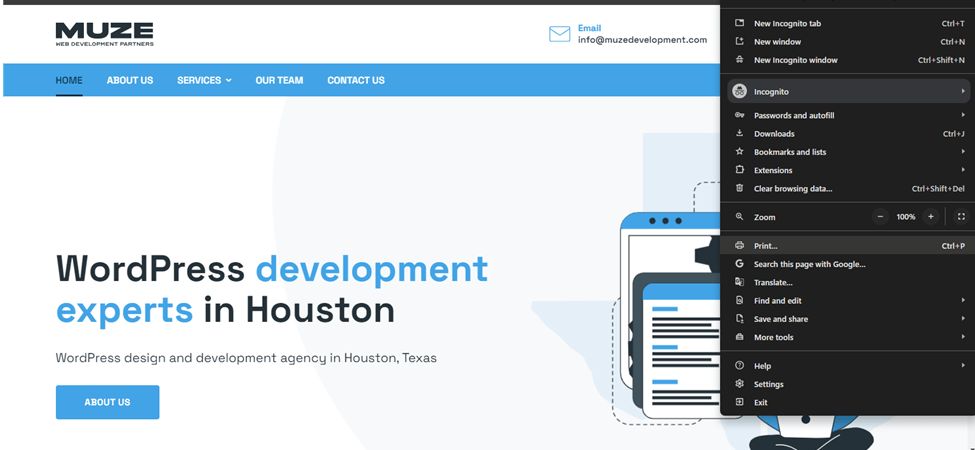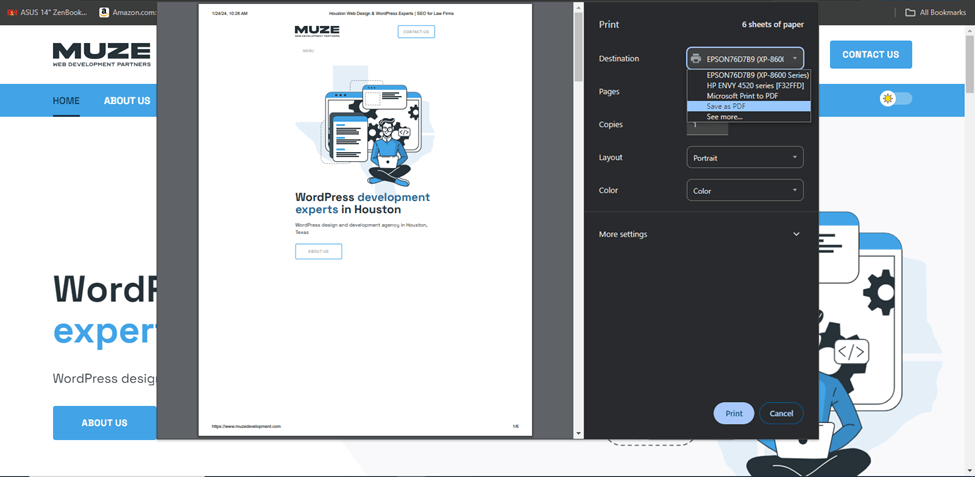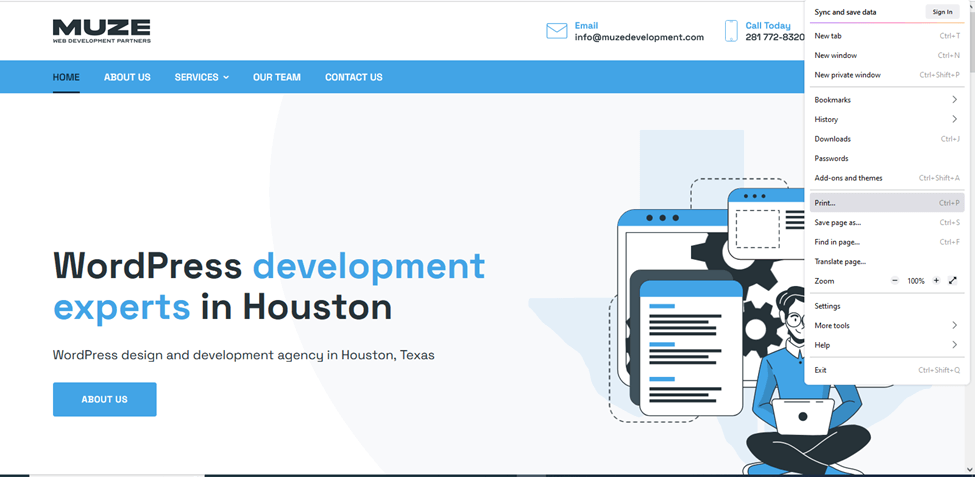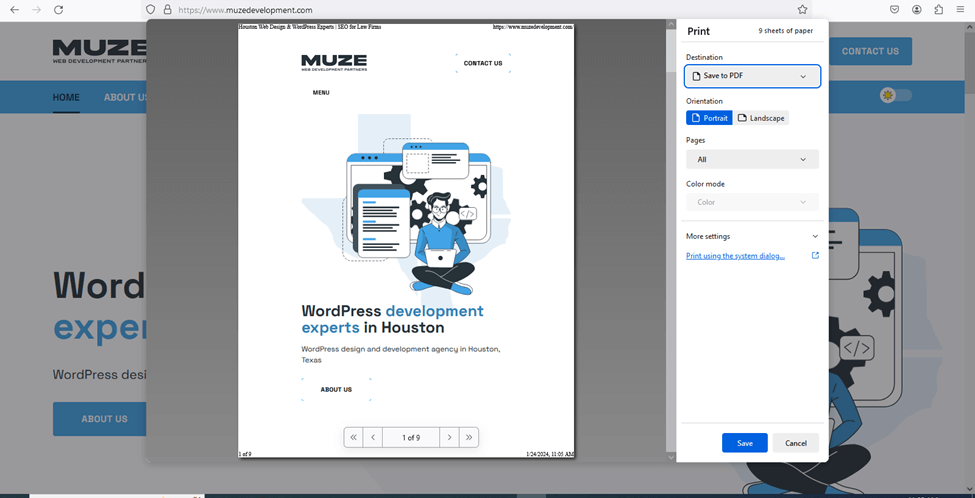With the ease of browsing a site online, you may wonder why you’d ever want to save a webpage as a PDF file. However, there are many reasons to do so:
- Allows you instant offline access to a webpage whenever you need it. This is helpful if you need to do work on an airplane or in a rural area where there is limited internet access, for example.
- Keeps a permanent copy of the webpage. Websites can go down, remove or change content, or block access behind paywalls at any time.
- Makes it easier to markup or annotate a webpage for work, school, or research.
Now that you know why you might want to save a webpage as a PDF, we’ll walk you through some of the various methods you can use to do so.
Using Web Browsers
Depending on your web browser of choice, there are a few ways to easily save a webpage directly through that browser. Below, we’ll go through Google Chrome, Mozilla Firefox, and Safari, but keep in mind that Microsoft Edge also has a similar process.
How to save a webpage as a pdf using Google Chrome
Google Chrome’s built-in feature offers a uniquely simple path to saving a webpage as a PDF file.
- Open the web page you want to convert
- Simply click on the Chrome drop down menu and select Print
- Once the print dialog opens, change Print destination to select “Save as PDF”
- Save
How to save a webpage as a pdf using Mozilla Firefox
Firefox also offers a streamlined way to save a webpage as a file.
- Open the web page you wish to convert
- Click on the Firefox drop down menu tab and select Print
- Once the print menu opens, change Print destination to select “Save as PDF”
- Save
How to save a webpage as a pdf using Safari
If you’re a Mac user, you have the option of using Safari to convert web pages.
- Open the web page you want to save as a PDF
- Click on the Safari drop down menu and Choose File
- Choose Export to PDF
- Rename and select tags, if desired, then choose the location to save to
- Save
Using an API to Generate PDFs of Webpages
For those who require a more automated and scalable solution, using an API like PDFShift can be incredibly efficient. PDFShift is a powerful API that allows you to convert webpages into PDF documents with ease. This method is particularly useful for developers and businesses that need to generate PDFs programmatically.
How PDFShift Works:
- Simple Integration: PDFShift’s API can be integrated into your existing systems with just a few lines of code, making it accessible for developers with varying levels of expertise.
- High Customization: You can customize the PDF output to a great extent. This includes setting page size, margins, and even injecting custom CSS to ensure the PDF looks exactly how you need it.
- Fast and Reliable: PDFShift prides itself on its high-speed conversion without compromising on the quality of the PDF output. This makes it ideal for applications that require real-time PDF generation.
- Secure Processing: Security is a top priority, and PDFShift ensures that your data is processed securely, with all communications encrypted.
Implementing PDFShift:
To use PDFShift, you need to sign up for an account and obtain an API key. Once you have the key, you can make a POST request to their API endpoint with the webpage’s URL and your desired settings. The API then returns a high-quality PDF file.
This tool is particularly useful for creating PDF versions of reports, receipts, transaction details, or any web content that users might need to save or print.
This method of using an API like PDFShift is best suited for more advanced developers who are comfortable with programming and API integration. If you find this process a bit daunting or if you’re in need of specialized assistance, don’t hesitate to contact us. Our team at Muze Development is equipped with the expertise to help you seamlessly integrate PDFShift into your systems.
Third-Party Browser Extensions and Add-ons
In addition to saving directly through your browser of choice there are also extensions or add-ons that can simplify the process even more.
Browser extensions or add-ons essentially create a direct path for conversion. Similar to adding a browser extension that corrects your grammar as you’re working, or finds you deals on shopping sites, a PDF conversion extension creates a quick way to simply click and convert. The bonus of an extension is that you can also typically customize them, such as choosing if you want to retain ads from a web page when it is converted.
Popular Extensions
As with most applications, there are many extensions to choose from. The best way to decide on which to use is to check their features for any functions you definitely want, and to read reviews of the extension. Note that some may charge a subscription-based or one-time fee. Below are three of the more well known extensions:
- Save to PDF: This extension works for both Chrome and Firefox. With this extension, you can right click on a web page and easily convert to PDF.
- Adobe Acrobat: Probably the most well known of the extensions, this can be used via their extension or their desktop application.
- Webpage to PDF Converter: Allows you to save a web page as PDF or edit PDFs simply. Available on Chrome.
Online Webpage to PDF Conversion Tools
If you don’t want to add another extension to your browser, there are also many websites that allow you to copy a link and then convert that into a PDF. Most of these sites are free for a limited amount of use, but may require a subscription if you will need to use them often. The advantages include easily converting pages to PDFs and not needing to download something separately on your computer.
Examples of Online Tools
There are many online converter tools to choose from, so be sure to read reviews and fully assess the websites before utilizing them. Below are several more popular choices:
- WebtoPDF: You copy a URL and paste into this website’s converter. A PDF is then generated.
- PDF SImpli: Take any HTML and paste it into their converter to generate a PDF.
- Print Friendly: This can be used as either an extension or directly on their website. As an extension, it works with Chrome, Firefox, Safari, and Edge.
Using Built-in Operating System Features
Depending on your operating system, there will be different built-in conversion features.
Windows OS
Microsoft Print to PDF is a feature for use in Windows. With this feature, you essentially create a virtual printer that saves files as PDFs rather than directly printing them. To use it: select print when on a web page or do “CTRL+P” and then select the virtual printer (Microsoft Print to PDF option) instead of your physical printer.
MacOS
If you’re an Apple user, then the feature you’ll use is Export as PDF. To use it: open the webpage that you want to save, select File, then select Export to PDF.
Using Screenshot Tools
Of course, there may be some cases where you’d like to avoid having a PDF. In those cases, a great alternative is to take screenshots of the pertinent information or web pages that you need.
In most cases, taking a screenshot is relatively simple. For example, if you’re on your phone, it may be as easy as tapping the back of your phone. On computers, it’s likely that you’ll have a print screen button or something similar.
Tools for Full-Page Screenshots
If you need a full page, rather than a section saved, then you will likely want to do a full page screenshot. These can be saved as PDFs for easy access later. Keep in mind, these tools tend to work better on text heavy sites rather than ones with moving images or scrolls.
- On Chrome: Chrome features a built-in full page screenshot tool that is a breeze to use.
- Hold either: Cmd + Opt + I (on Mac) or Ctrl + Shift + I (on Windows)
- Then hold either: Cmd + shift + P (on Mac) or Ctrl + Shift + P (on Windows)
- The search bar will pop up, after the word RUN >, type screenshot.
- Select Capture Full-size screenshot.
- You can also add extensions, such as Go Full Page.
Mobile Apps for Saving Webpages as PDFs
You might be wondering: what if I’m usually on my phone instead of a computer? Luckily, there are still ways, typically apps you can download, to save webpages as PDFs even when on your mobile device.
iOS Apps
- Web to PDF Converter: Instaweb’s app also has an option to remove clutter, such as ads, from the web pages when saving them.
- PDF Convert: Allows you to save a webpage to PDF, and then convert to .doc or .file pages as well.
- Webshot: Takes an entire page screenshot.
Android Apps
- Web to PDF Converter: The same app as is available through the Apple Store.
- Web to PDF COnverter PRO: The above app with more bells and whistles, but does have a one-time cost.
- Convert Web Pages to PDF: Converts pages to PDF.
Conclusion
Ultimately, converting web pages to PDF doesn’t need to be a hassle and can free you up to view and edit web pages any time you need them. It’s a perfect solution for offline access, archiving important information, or sharing something easily with colleagues.
Additional Resources
For more info on Full Page Screenshots
In-depth explanation of Microsoft Print to PDF
In-depth explanation of how to save a web page to PDF on Mac
